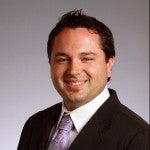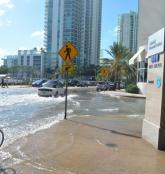This week marks the one-year anniversary of the severe weather outbreak that brought high winds, hail, and tornadoes to half of all U.S. states. The most damaging event in the outbreak was the Moore, Oklahoma tornado of May 20, 2013. Rated at the maximum intensity of EF5, it had maximum sustained wind speeds of up to 210 mph and was the most deadly and damaging tornado of the year for both Oklahoma and the U.S., causing roughly $2 billion in insured losses.
As we reflect upon the events that have taken place in Moore, the following can be discerned:
- Understanding severe weather risks is key: According to the RMS U.S. Severe Convective Storm Model in RiskLink 13.1, the annual likelihood of a severe weather event causing at least $1 billion in insured losses in the U.S. is 92 percent, meaning it is almost certain to occur each year. For reference, from a loss perspective, the $2 billion 2013 Moore tornado loss represented a 1-in-50-year event in Oklahoma, or an event with a 2 percent chance of occurring in a given year. Similarly, a 1-in-100-year event, or an event with a 1 percent chance of occurring in a given year, would cause $4 billion or more in insured losses for Oklahoma. Events in excess of the 1-in-100-year return period would be driven by large, destructive tornadoes hitting more concentrated urban environments, such as a direct hit on Oklahoma City. Probabilistic severe storm models provide more perspective on these types of risks, and can better prepare the industry for the “big ones.”
- What grabs the headlines doesn’t cause the most damage: Although tornadoes get all the news coverage and are often catastrophic, hail drives roughly 60 percent of the average annual loss in convective storms. This is mainly driven by the much higher frequency of hailstorms compared to tornadoes. Hailstorms also have a much larger average footprint size.
- Tornado Alley isn’t the only risky place: Tornado Alley drives roughly 32 percent of the average annual loss for severe convective storms in the U.S., while the Upper Midwest drives 24 percent, Texas drives 16 percent, and the Southeast drives 12 percent. Buildings in affected areas need continued upgrades: For example, the Moore city council approved 12 changes to the residential building code after the Moore tornado, including mandates for continuous plywood bracing and wind-resistant garages (often the first point of failure during weak to moderate winds).
While we can never predict exactly when severe weather will occur, it’s imperative for communities, businesses, and individuals to understand its potential impact. Doing so will help people and industries exposed to severe weather be better prepared for the next big event.
Are you located in one of the regions affected by last May’s outbreak, or in another risk-prone area? Have you been affected by any recent severe weather events? If so, what did you learn, and what changes were made in your region to safeguard the community, businesses, and homes? Please share your experience in the comment section.
Jeff Waters also contributed to this post.






